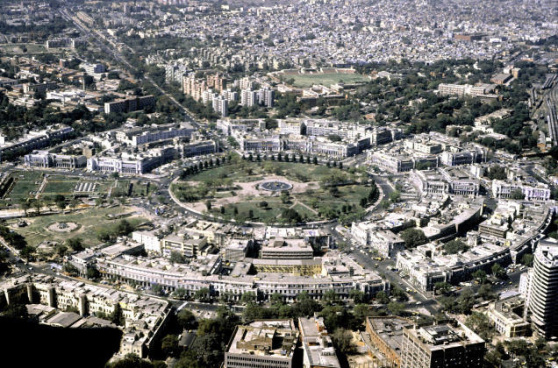
Gujarat Pollution Control Board Member Secretary

Gujarat Pollution Control Board
Member Secretary
Gujarat Pollution Control Board Member Secretary Hardik Shah tells Veena Kurup of ENN about the strides the state has made towards green constructions – to keep sustainable development close by and pollution at bay
What initiatives have you taken to keep up with the prevailing trend towards eco- buildings and structures?
We began our journey with eco-friendly infrastructure constructions to spread the message of energy efficiency and green buildings. As they say charity begins at home, we first applied the green building concept in the construction of our own office in Gandhinagar. And today, it stands tall as a winner of the acclaimed Gold Rating for innovative initiatives in saving and generating surplus energy that we contribute to the grid. Now, we showcase our office as a live and operational example of a green building.
Gujarat is at the forefront of infrastructure development. Brief us on the role GPCB played in upholding the objectives of green construction?
We took the clue from our state’s vision emphasizing on renewable energy, as Gujarat has already installed more than 800MW of solar power projects. Traditionally, we are used to the import of conventional sources of energy such as coal and crude oil; instead, we should pro-actively promote solar energy that the nature has blessedIndia with. In Gujarat, there is a Green Building Promotion Committee. We took up this agenda to have green buildings in government setup, so that the private sector could also be roped into the drive. We have the Indian Green Building Council (IGBC) in Ahmedabad conducting awareness campaigns for green buildings. With the GPCB’s own eco-building, we have set an example for others to emulate and take the mission forward.
With industrialization, environment pollution is a big concern today. What is the role of GPCB in this domain?
Although development is happening at a fast pace, we have seen in Gujarat that the pollution parameters have gone down over the years, more so because of growing urbanization. However, we have reined in pollution reasonably well and tried to abide by the parameters in most industrial and urban areas.
Tell us on the use of hazardous waste in cement kilns.
We have seen that high calorific value hazardous waste is usually not considered of any use and most of these are dumped into industrial waste landfill sites or sent to incinerators. In Gujarat, we started working on harnessing this valuable energy resource, and have been quite successful in the cement industry. More than 9 lakh tonnes of waste has been co-processed in the cement industry in the past three years. We have progressed in this field, and now have a roadmap ready to move further. In the plastics industry, we have the capacity to utilize 300 tonnes of raw material a day, and very successfully utilized it as fuel.
Getting best out of waste
“ High calorific value hazardous waste is usually dumped; but in Gujarat, we are working on harnessing this valuable energy resource, and it has been quite successful in the cement industry ”
How do you see the role of sustainable environment planning towards effective urban planning and development?
It is very important because anything that we do has a lot of impact on the environment and natural resources. As industrialization and urbanization has increased in the state of Gujarat, like elsewhere, it is imperative to have sustainable approach in urban planning. We have introduced cleaner fuel and strengthened our public transport to reduce load of private vehicles, among other structured approaches and policies implemented in the state.
Could you brief us on the GPCB initiatives in the pipeline?
We plan to exploit full potential of cement plants, and once achieved, we would try out the initiative in thermal power and steel industries as well. Gujarat has the highest investment in environmental infrastructure, and we intend to do more in this direction. Also, we have taken up a project of environmental clinics. As part of the focused interventions by the GPCB, we go to the industries to ask them for their problems and offer expert assistance and guidance to solve those. These clinics can be sector specific, process specific, region specific, product specific or environment specific. In order to involve the academia, we have started a programme, wherein researchers are invited and allowed to work on real time environmental problems. This way we can promote environmental research and also attract the local Indian talent.
How do you tackle the issue of solid waste management (MSW) that has become a challenge for most of the cities June 2014 / iceconnect.eletsonline.com / ICE Connect across India?
Given the pace of urbanization, it has become a burning issue today, not just in India but globally. Innovative approaches are being worked out to handle the issue. For example, we have taken up trials of co-processing of municipal solid waste (MSW) by enriching it with RDF (Refuse Derived Fuel) and also without it. Tier-II and III cities have been included for model development, and now 50 towns and 50 urban areas have been included for conversion into model towns and cities. The plan includes treatment of MSW and sewage.
What are the major challenges the organisation faces in implementation of programmes?
First challenge pertains to effective research in the field of environment conservation and pollution control, as we do not have enough research done in these areas, especially with regard to industrial waste. It needs to be enhanced. Secondly, while working on an innovative idea, you need to have an excellent team to implement the vision. But, in a government organization you may not have much choice; so, we are trying to raise the team by motivating people, taking them along and providing enough opportunities for capacity building to achieve success.






















